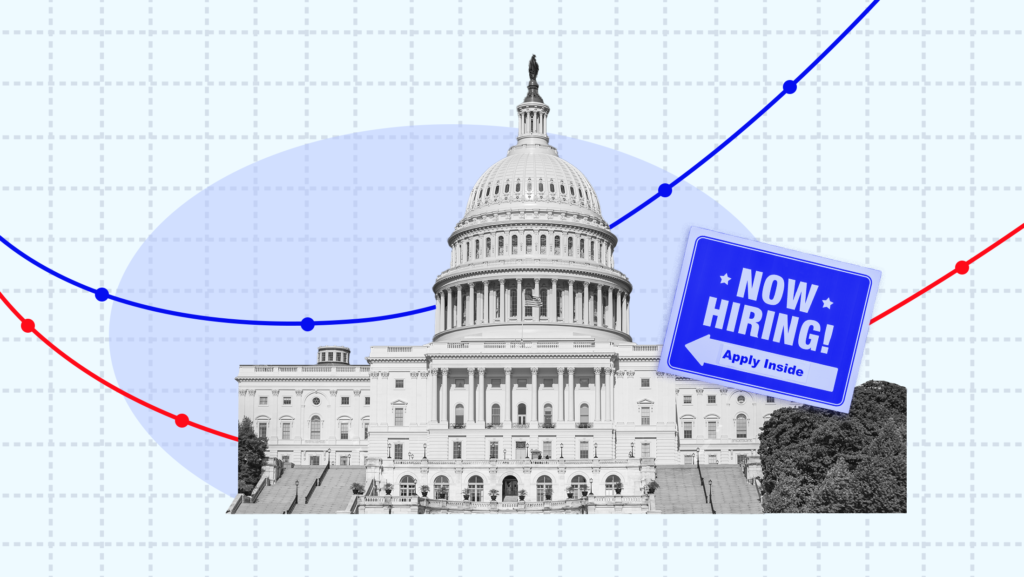When It Comes to the House, Bigger Might Be Better

You might take it for granted that the U.S. House of Representatives is made up of 435 voting members. But the House didn’t always have a fixed number of members — until the 1900s, it actually grew as the U.S. population grew. This ensured states didn’t lose members and representatives weren’t representing too many constituents.
In 1929, however, in response to concerns the House was growing too large, Congress passed the Permanent Apportionment Act, permanently setting the membership at 435. At the time, each member of Congress represented 280,000 constituents on average in their districts. But America’s population has more than doubled since then, now with an average of 762,000 people per representative. This ratio is unusually large by global standards — members of parliament in the United Kingdom, for example, represent about 100,000 people. Capping the total number of representatives also turned congressional representation into a zero-sum game — when a state gains a representative, that means another state has to lose one.
In response to these concerns, some organizations have proposed repealing the Permanent Apportionment Act and expanding the size of the House to add more representatives. In “The Case for Enlarging the House of Representatives,” four scholars from diverse backgrounds explain why a bigger House would be better for America and lay out how to do it.
A bigger House would:
1. Help foster stronger connections with constituents in smaller districts.
One major drawback of the current size of congressional districts is that they are too large for representatives to have any meaningful connection with the people they’re meant to serve. Moreover, a representative can’t be sure the constituents they interact with accurately reflect the rest of the district. As the report puts it, “the more constituents a member represents, the more abstract the constituency becomes to them.” Making districts smaller would make it easier for members to be exposed to more points of view and better represent their districts. Likewise, smaller districts also benefit constituents, as they have less competition for their member’s time and resources. Accordingly, constituents may feel they have more of a relationship with their representative beyond just voting if they feel they can share their concerns and get help from them.
2. Expand the talent pool of the House.
Adding new districts to the House would also help make Congress more diverse in two ways. First of all, having more members means more people can serve in Congress, increasing the likelihood Congress reflects the nation’s diversity. Secondly, smaller districts also encourages greater diversity among representatives since it’s easier and less costly to run for election in a smaller district. Right now, running for Congress is a huge undertaking that requires significant resources. Having smaller districts would reduce these barriers and allow more people from different backgrounds to run.
3. Increase the influence voters have in election outcomes.
In smaller districts, each voter has a greater chance of influencing the outcome of an election than they would in a larger district. This means that any specific subgroup of voters is more likely to sway the outcome of an election and are better able to elect a member of its choice. This would be true for racial and ethnic groups, but also low-income voters, rural voters or specific communities of interest that are now drowned out in larger districts. In turn, this would help increase the diversity of the House’s membership and ensure more voices are represented in the policymaking process.
4. Help Congress handle its workload.
Since Congress was capped at 435 members, the size and scope of the federal government has increased exponentially. Today’s Congress is supposed to oversee 180 executive agencies and manage a budget of $4 trillion — simply put, it has more to do than ever. Most members can’t keep up with the workload, skipping their own committee hearings and often not reading legislation until it’s voted on. Adding more members would lighten the workload for the rest, and might shift more power to the deliberations of congressional committees and allow members to become more specialized in specific policy areas.
The report recommends increasing the House to 585 members.
The report argues in favor of adding 150 members. It draws this number from the 149 seats states have lost since the total number of seats was capped and adds one more to ensure the House has an odd number of members to preclude the possibility of tied votes. This would allow states to regain the representation they’ve lost over the past 100 years and reduce the average district size to 566,000 constituents.
But rather than just stop there, the report also recommends continuing to expand the House as the population increases. Specifically, the number of representatives should increase by the number necessary to ensure no state loses a representative, as was historically the norm. This would ensure the ratio of constituents to representatives stays manageable and no state loses representation.
The report also notes that increasing the size of the House by 150 would not have a significant impact on the outcome of congressional elections or presidential elections, and as such it should earn bipartisan support. It also suggests other reforms that could be paired with expanding the House, including introducing ranked-choice voting, independent redistricting commissions and clean election laws.
As we previously covered, Americans are dissatisfied with the state of democracy and supportive of changes to our political system. As the report lays out, making our politics work better may be as simple as just making the House bigger.